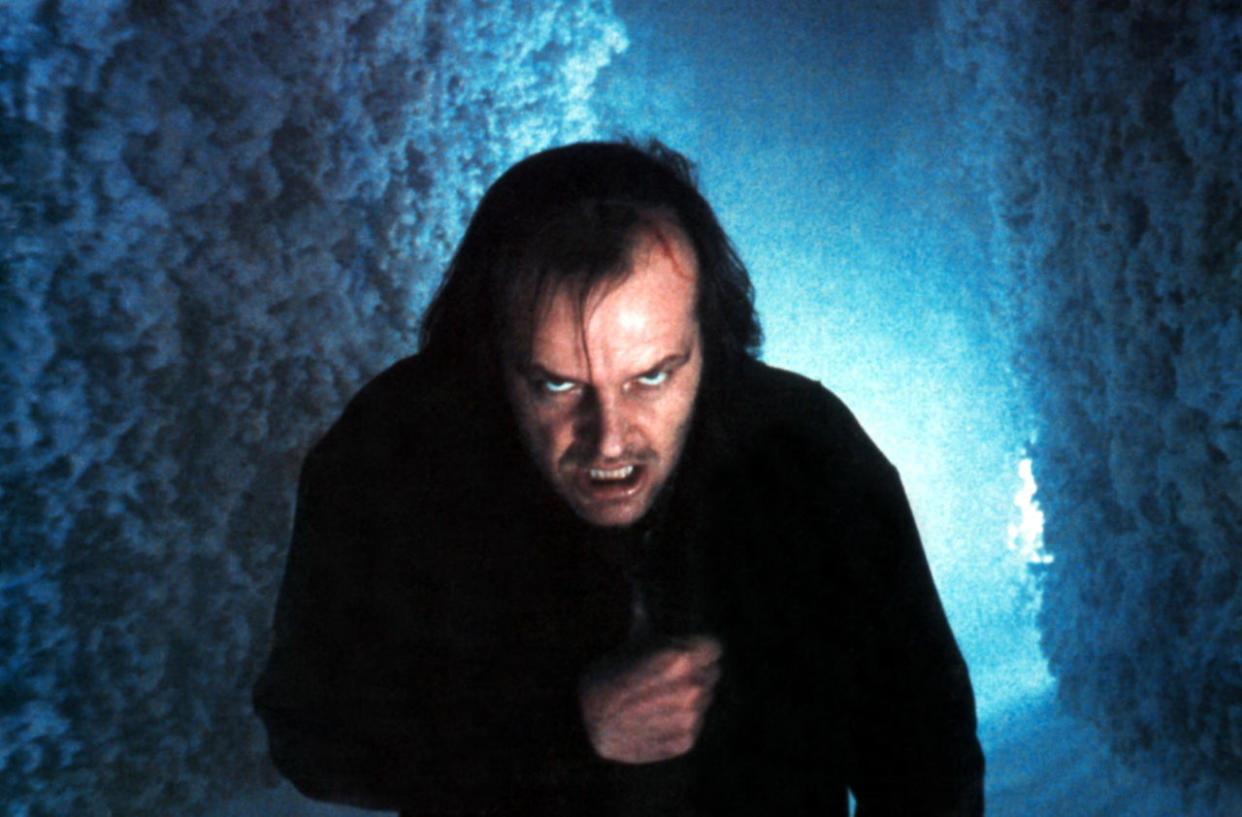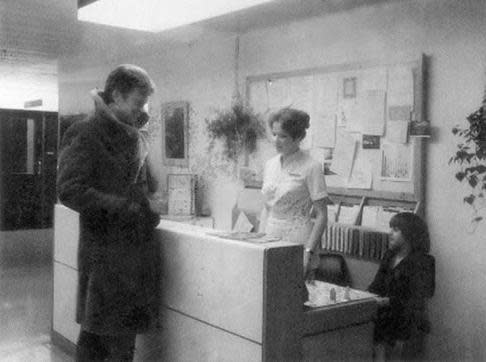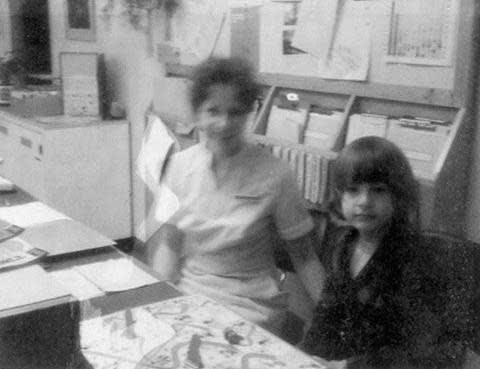The Lost Ending Of The Shining Explained

In the final shots of Stanley Kubrick’s The Shining, the audience sees the corpse of Jack Torrance (Jack Nicholson) frozen to death in the hedge maze where he tried to kill his wife Wendy (Shelley Duvall) and young son Danny (Danny Lloyd).
Then the camera moves to a vintage photograph on the wall of The Overlook Hotel, which inexplicably includes Jack among the 1920s revellers. It’s an indelible set of images – but it wasn’t the ending that director Kubrick first envisioned.
- Emily Lloyd: The Unluckiest Actress Ever?
- 7 Amazing British Films That Are Lost Forever
- 7 Actors Who Hated Being In Star Wars
When The Shining premiered in theatres in 1980, those two iconic shots bookended an additional scene, of Wendy and Danny recuperating in the hospital. This week, on a Reddit thread titled “Frames from the hospital scene from the original ending of The Shining,” a fan unearthed three continuity Polaroids that show scenes from the film’s deleted epilogue. Read on to find out what happened in The Shining’s original ending, and why Kubrick made the last-minute decision to axe it.
The two-minute hospital scene, according to co-screenwriter Diane Johnson, was Kubrick’s way of reassuring the audience that Jack’s wife and son were okay after his murderous rampage. “He had a soft spot for Wendy and Danny,” Johnson explained in an interview in Kubrick: The Definitive Edition. However, the scene – as it reads on paper, anyhow – isn’t exactly a reassuring hug. The script pages from the deleted epilogue were published two years ago on The Overlook Hotel, an exhaustive fan site run by Pixar director Lee Unkrich (who peppered his film Toy Story 3 with subtle Shining references).

The scene opens with Stuart Ullman, the manager of the Overlook Hotel (played by Barry Nelson), arriving at the hospital with flowers for Wendy. On his way in, he greets a nurse, who is playing a game with Danny. When Ullman enters Wendy’s room, he tells her that the police have completed an investigation of the hotel, and “they didn’t find the slightest evidence of anything at all out of the ordinary.”
He adds that “it’s perfectly understandable for someone to imagine such things when they’ve been through something like you have.” Then Ullman offers to put the Torrances up in his beach house while they recuperate. On his way out, Ullman tosses Danny a yellow ball – a reference to the tennis ball that mysteriously rolls up to Danny earlier in the film, leading him to the hotel’s haunted Room 237.
In short, the epilogue suggests that Ullman is a participant in the hotel’s supernatural evil, and that he is a conspirator in keeping its deadly secrets. Shelley Duvall said in Kubrick: The Definitive Editionthat she believed the cut scene was crucial in explaining “some things that are obscure for the public, like the importance of the yellow ball and the role of the hotel manager in the plot.”

There was one more element to the deleted ending. After the camera zoomed in on the photograph of Jack, a title card was to appear, reading: “The Overlook Hotel would survive this tragedy, as it had so many others. It is still open each year from May 20th to September 20th. It is closed for the winter.” Once again, this reinforces that the hotel itself is evil.
But what are those “many other” tragedies? At the beginning of the film, Ullman informs Jack that a previous caretaker went stir crazy and killed his family and himself. That’s one. But In the original script, Jack also discovers a large scrapbook in the boiler room with news clippings of all the murders and suicides throughout the Overlook Hotel’s history. Kubrick shot scenes with the scrapbook, but didn’t include them in the final cut. (You can read one of them here.)
When The Shining premiered in limited release in May 1980, the hospital scene was still there. Just days after the film opened, however, Kubrick decided the epilogue needed to be excised. Heexplained his rationale to the press in a telephone statement, saying, “when I was able to see for the first time the fantastic pitch of excitement which the audience reached during the climax of the film, I decided the scene was unnecessary.”
Since the movie was already playing in New York and Los Angeles, Kubrick issued an unusual order: He instructed projectionists to cut the scene from the film by hand, and mail the deleted film strips back to Warner Bros.

Whether the deleted ending made the film better or worse is a matter of debate among the few who have seen it. New York Times critic Janet Maslin (via Slate) advocated for the hospital scene, saying that it “helped maintain the film’s languid, eerie rhythm” and saved the ending from being too “abrupt.”
Roger Ebert wrote in his Great Movies review of The Shining that the excised epilogue “pulled one rug too many out from under the story,” though it’s unclear whether Ebert himself saw the original cut. (He’s under the impression that the deleted scene revealed that police never found Jack’s body. In the script pages – which, in fairness, Kubrick might have changed while filming – the body is not explicitly mentioned.) More discussion on the scene can be found in this archived page from the alt.movies.kubrick newsgroup, where fans who saw the original cut have shared their recollections.
The million-dollar question is whether the deleted ending from The Shining will ever see the light of day again. There’s a good chance that it still exists somewhere; Unkrich indicates on his website that the Stanley Kubrick Archive in London has “35mm film trims.”
However, Kubrick obviously didn’t want anyone to see the footage, or he wouldn’t have been so adamant about cutting it before the film went into wider release. As long as film historians respect his wishes, the alternate ending of The Shining – like the epic deleted pie fight from Kubrick’s Dr. Strangelove – will exist only in photos and memories.
Image credits: Rex Features/Imgur

 Yahoo Movies
Yahoo Movies 
